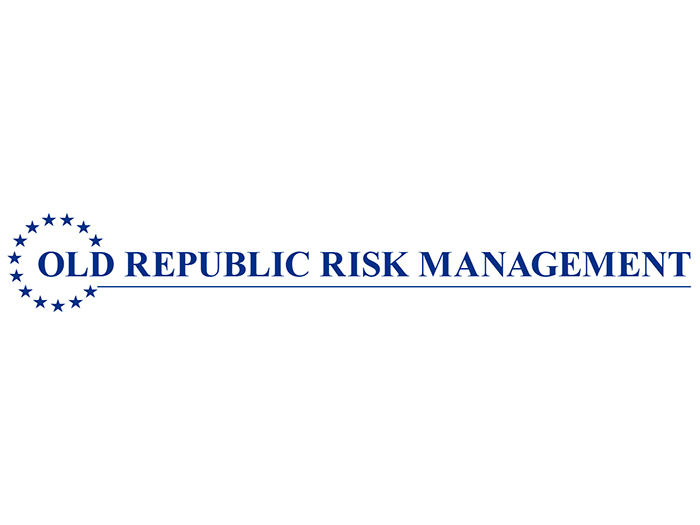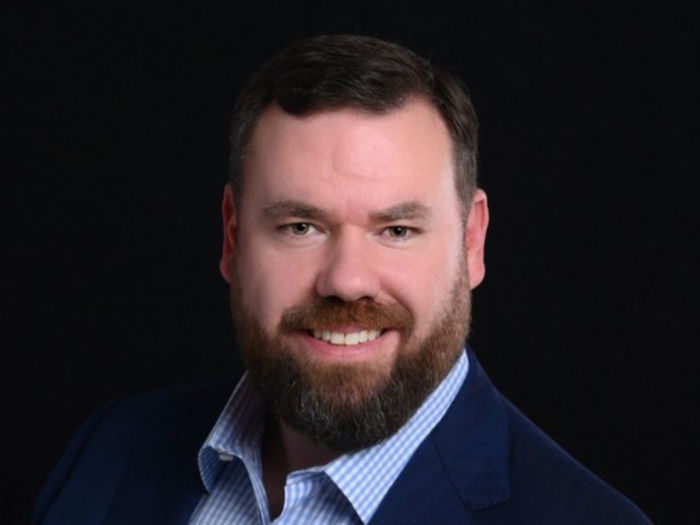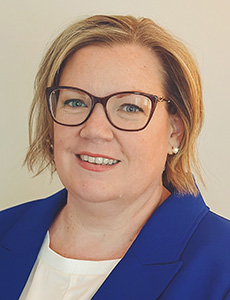
Cruise ships are facing new exposures and insurance challenges. Marsh's Sean Harrington breaks down the emerging risks companies need to know.
By: Dan Reynolds | May 2, 2024
Few industries came out of the COVID-19 pandemic unscathed, but those focused on travel, hospitality and leisure faced particular hurdles as many hunkered down in their homes for much of 2020 to avoid exposure to the virus.
Cruise lines, especially, struggled. In February and March of 2020, cruise lines reported a more than 14% decline in sales compared to the previous year, per reporting from Vox. Now, as the industry bounces back, they’re facing a suite of new challenges.
Dan Reynolds, editor-in-chief of Risk & Insurance®, sat down with Sean Harrington, ARM, AIC, senior vice president, global marine practice at Marsh, to discuss the emerging challenges — including sustainability and recovering from the COVID-19 pandemic — that the cruise industry is facing.
Risk & Insurance : How have cruise lines performed since the COVID-19 pandemic?
Sean Harrington: The word “rebound” comes to mind. We saw the industry abruptly halt in March of 2020. The resumption of operations was a more gradual process starting in 2021 and ramping up in 2022. In 2023, we saw the effects of pent-up demand prompting record-breaking revenues and a return to full year profitability for some.
General indications point toward a strong 2024 as bookings soar. The recovery speaks to the resilience of the industry to be able to withstand such severe disruption.
Cruise lines certainly did not exit the pandemic unscathed and debt obligations now loom, but there are positive takeaways. For example, health protocols and technologies implemented during the recent pandemic can be repurposed to combat other pathogens.
Additionally, cruise lines now have an opportunity to build on the extensive training crew members received during the pandemic to sustain a heightened awareness of public health matters onboard ships. What hasn’t sunk the cruise industry can make it stronger, and prudent participants will take inventory from recent years’ events to better prepare themselves for future disruptions.
R&I : Everyone is talking about sustainability. What actions are cruise lines taking in this arena?
SH: Sustainability is not a new topic for the cruise industry, but it has taken center stage in recent years, particularly from an environmental perspective.

Sean Harrington, ARM, AIC, senior vice president, global marine practice, Marsh
Prompted by internal initiatives and pending regulations, cruise lines have set ambitious decarbonization goals for the future. Proposed solutions to achieve these goals include alternative fuels, shore power (i.e. the ability to turn off ship engines in port and plug into power sources ashore) and other energy conservation efforts.
Yet, uncertainty and challenges abound. Currently, there is no clear consensus on one maritime fuel for the future. Companies are exploring a variety of options such as biofuels, LNG, methanol, ammonia and hydrogen — each fuel having unique environmental impact, operational viability and scalability profiles that companies need to consider.
To add a sense of urgency, 2050 is slated to be a key year for the industry to achieve its most significant decarbonization goals yet, meaning ships built in the relative short term will already need to contemplate the implications of operating in the proposed greener future.
On the topic of shore power, we are seeing more ships being built or retrofitted to have this capability, but that is only part of the equation. Ports will also need to have suitable infrastructure to meet the energy demand of calling ships. Bottom line, it will take a significant amount of cooperation among the industry and its various stakeholders to achieve these environmental sustainability goals.
R&I : What emerging risk trends is the industry facing?
SH: Many cruise customers are interested in taking the road less traveled and aiming to check off bucket list destinations. As the demand for these unique itineraries increases, cruise lines must closely monitor both geopolitical instability and remote itinerary challenges.
Cruise lines saw notable disruption of Middle East itineraries last Fall and Winter due to regional conflict including a deteriorating situation in the Red Sea. With itineraries altered or canceled altogether, cruise lines must decide what to do with the ships.
They might reroute, redeploy to another region, or take advantage of an operational pause to conduct periodic maintenance. The fact remains, unexpected operational deviations can be costly. Large lines may be less susceptible to this disruption due to their significant, geographically diversified fleets, while smaller operators could experience greater financial turbulence, proportionally speaking.
Ultimately, cruise lines are inherently vulnerable to geopolitical risk and it is important that itinerary planners are well-informed, nimble and cautious while catering to consumers’ increasing demand for new travel experiences.
Similarly, there has been an increased demand for itineraries including remote locations like Antarctica. These special itineraries can pose unique risks and logistical challenges such as harsh environmental conditions, a limited operating season and distant emergency assistance.
Thorough voyage planning supported by proper certification and infrastructure will enable companies to successfully offer these itineraries.
R&I : In general, what is the state of the insurance market for cruise lines?
SH: Cruise lines purchase the same maritime insurance coverages that other vessel owner/operators do, most notably hull and machinery (H&M) covering damage to the vessel itself and protection and indemnity (P&I) covering third-party liability arising out of vessel operations, the latter being often placed with one of the P&I Clubs part of the International Group.
The H&M market for so-called “blue water” risks (which includes many cruise lines) has recently experienced an influx of insurer capacity, generating competition and insured-favorable pressure on rates. From the P&I Clubs, there was an easing of general increases from 2023 to 2024 in the wake of improved underwriting performance.
While we have seen recent evidence of improving market conditions, there are now questions and concerns about the future, particularly considering the tragic Dali incident at the Francis Scott Key Bridge in Baltimore — time will confirm the impact to insureds as this situation develops.
R&I : What do you think are some key drivers of success for the industry going forward?
SH: Cruise lines operate in a complex and dynamic global environment. First, industry participants must be strategically committed to long-term objectives with agility to adapt to unforeseen developments occurring on a worldwide stage.
Second, as mentioned earlier, cruise lines will need to work closely with governments, communities and other industry stakeholders to jointly establish a sustainable cruising future.
Last, the ability to attract and retain industry talent is an important issue to watch. Crew members are the lifeblood of a fleet’s operation, and the consistent level of service they often provide while working consecutive months at sea is a big part of why many choose cruise vacations.
Providing a healthy work environment, career-advancement opportunities, competitive pay and mental health resources are ways that cruise lines can attract and retain talent who will complement their product offerings. &
Dan Reynolds is editor-in-chief of Risk & Insurance. He can be reached at [email protected].

We hear about advances in medical care all the time, but when will we start seeing the impact? Will it be next year? In the next five years or 10 years? How about right now?

While some workers’ comp carriers recognize that addressing an injured worker’s stress can speed up recovery, not all provide a holistic approach. Integrating an Employee Assistance Program (EAP) into a workers’ comp program supports total worker health before and after an injury.

Despite robust underwriting profits, U.S. cyber insurance market faces stagnation in premium volume due to pricing pressure and evolving cyber risk landscape, according to Fitch Ratings.

The latest hiring announcement in the industry today.
CorVel has witnessed topical costs rise following the recent drop in opioid prescriptions, and now offers alternatives to manage their expense without impacting care.
By: CorVel | September 3, 2024
A single workers’ compensation claim has several moving parts: scheduling appointments, return-to-work strategies, keeping all stakeholders informed and more.
Pharmacy management is another piece of the comp puzzle that must be addressed. Brand drugs and other prescription practices used in workers’ compensation can quickly drive claims costs if they’re not managed effectively, and minimizing patient risk and reducing pharmacy spend should go hand in hand.
“Injured employees waiting at the pharmacy for their medications can become a significant pain point,” said Sarah Scott, vice president of network services for CorVel.
“Likewise, not having a clear view of the best pharmacy management solution strategy can slow down the process and become costly,” both in terms of the actual price tag and in terms of patient recovery.
Finding a pharmacy management solution does not need to feel like an added chore. According to Scott, there are three key elements that make up a good pharmacy solutions partner: transparency, cost efficiency and customization.
Here’s a deeper look at these three traits, why they are important when it comes to pharmacy management in workers’ comp, and the added benefits of finding a solution-driven pharmacy management partner.

Sarah Scott, Vice President of Network Services, CorVel
Good communication is always appreciated, no matter the discipline or industry.
In workers’ compensation — and specifically pharmacy management — effective communication is demonstrated through transparency in costs, performance and clinical engagement.
“At CorVel, we give clients full visibility into medication costs and promote fair pricing strategies. In jurisdictions with medication fee schedules, we offer our clients pricing at or below the fee schedule. Additionally, we don’t promote or take rebate credits on brand medications,” Scott said.
“We want our clients to have complete transparency into what we’re paying for medications and ensure that we’re fairly compensated for our management and activities,” she added.
This is done in an effort to eliminate unwanted surprises throughout the process. It’s also done to show that pharmacy management solutions can be tailored specifically to the needs of the workers’ compensation space.
Workers’ comp can be a complex industry, and any workers’ compensation partner must have the skills to navigate the space effectively. Transparency in pricing and performance is a great start, but true mastery comes with the people supporting these efforts. That’s why good communication in customer service must be weighted equally to transparency.
CorVel has worked to create a team ready to address the many needs of patients throughout their pharmacy journey.
“Given the complexity of workers’ comp, one of the ways we’ve worked toward great customer service is by ensuring that our entire pharmacy team, from customer service representatives to management, are certified pharmacy technicians,” said Scott.
In addition to certified pharmacy techs, the team comprises PharmDs and pharmacy nurses, fostering a patient-centric clinical approach to care that ensures safe, appropriate and cost-effective medication management.
“We believe it’s critical that the team has the clinical knowledge in the space they’re working in and can effectively communicate with the clinicians they interface with,” said Scott.
Being up-front and transparent goes a long way in pharmacy management and patient recovery. The next step in the process is having a partner that actively finds ways to reduce costs where appropriate.
Scott shared that CorVel approaches pharmacy spend reduction in several key ways: through strategies like maximum network penetration, custom formulary management, generic substitution and aggressive utilization management.
“When we say ‘maximum network penetration,’ we’re referring to maximizing the volume of prescriptions that go through our pharmacy network, allowing us to control and manage them proactively,” she explained.
CorVel does this to ensure prescriptions are appropriate and safe for the injury in question while also keeping a finger on the pulse of out-of-network prescriptions that can be redirected back in-network to better manage their cost.
Regarding custom formulary management, Scott said that the team offers formulary customization at various levels. For example, “at the client level, we can have a custom formulary where the customer specifies which medications should be approved and which require prior authorization,” she said.
“We can also customize at a granular level for individual claims. This custom formulary management allows us to tailor the formulary to the specific needs of clients and individual claims.”
These efforts further reduce time to fill because they enable the client to decide which specific medications are paid up front. Another key saving approach is that the formulary itself is universally generic, meaning any brand name medications must receive prior authorization before being dispensed.
Finally, Scott said, utilization management can be used to make sure the medications and other treatments administered are appropriate for the individual claim. This is something that’s particularly important in the management of opioids, high-cost prescription topicals or specialty medications.
“As a team of health care professionals, it is our job to work together to identify what treatment an individual requires to make a full recovery,” Scott said. “Staying ahead of every single new and upcoming medication is indeed challenging, but within our organization, we focus on staying informed about these developments … to provide the best possible service to our clients and the individuals on the claim.”
The final trait of a good pharmacy management solution partner is an ability to customize its services to match the needs of its clients.
The CorVel team has worked to tailor its solutions to meet the unique needs of each client, as seen in its ability to allow the client to decide which drugs can be paid up front and which require prior authorization.
When taking it one step further, said Scott, “integration is a key component.”
CorVel looks at the different elements of a prescription, like out-of-network spending, state formularies and fee schedules, and brings them together into its workflow, all in an effort to streamline processes and deliver efficient solutions to clients.
“We offer a variety of integrations, but the most impactful is the ability for clients to click into our system and view key medical components of a claim to assist in determination of prior authorization,” she added. “During this process, they have full visibility into the medical spend and access to information on previously dispensed medications from prescribers.”
With over 35 years of experience in the workers’ compensation space, CorVel not only demonstrates the key traits of a pharmacy management solutions partner — its team lives by them.
“We aim to provide tailored solutions that address the specific needs and challenges our clients face. Our approach is centered around the specific nature of each case, considering the particular injury, task and employment context of the individual in the claim,” said Scott.
“This targeted focus creates natural guardrails that ensure we deliver the most appropriate and effective care for each individual.”
CorVel has put in the time and effort while acquiring the resources to provide clients with a comprehensive formulary focused on medications needed for recovery. It has made this process as transparent as possible, and offers 24/7 access to customer service should a question arise.
“Our pharmacy management solution goes beyond cost reduction,” said Scott. “We actively offer a transparent, efficient and client-centric approach to pharmacy management, placing our clients’ needs and the injured employee’s care at the center of what we do.”
![]()
This article was produced by the R&I Brand Studio, a unit of the advertising department of Risk & Insurance, in collaboration with CorVel. The editorial staff of Risk & Insurance had no role in its preparation.
CorVel is a national provider of risk management solutions for employers, third party administrators, insurance companies and government agencies seeking to control costs and promote positive outcomes.